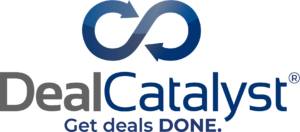August 31, 2021 - by Tess Virmani. The LSTA has now published its Term SOFR Concept Document – the latest addition to its SOFR Document Library. This document illustrates a term loan facility referencing Term SOFR as its benchmark rate of interest. A blackline against the LSTA’s LIBOR referenced term loan form is available here.
Members must bear in mind that this concept document does not purport to represent or set any standard market practice. It has been developed simply as a tool to further familiarize market participants with replacement benchmark alternatives, in this case Term SOFR, which will hopefully further assist each institution with its own transition planning.
Background
The Alternative Reference Rates Committee (ARRC) has recommended CME’s forward looking Secured Overnight Financing Rate (SOFR) term rates (SOFR Term Rates) for use in ARRC recommended fallback language as well as syndicated and bilateral business loans, CLOs, and end-user facing hedges on Term SOFR-referenced assets. See the ARRC’s Recommended Term SOFR Use Cases. In light of the ARRC’s recommendation, the LSTA has prepared this Term SOFR Concept Document, which has been vetted by the LSTA’s Primary Market Committee, to assist members who are interested in implementing Term SOFR for syndicated loans.
Overview
Benchmark Structure and Floors
LIBOR and SOFR are inherently different in that SOFR is a secured rate while LIBOR includes a credit premium. Where the differential is being addressed in ARRC hardwired fallback language by applying the the ARRC/ISDA spread adjustment to Term SOFR, there are several ways in which the differential can be addressed in new loan origination. We have offered drafting for those alternative approaches:
- Term SOFR plus Applicable Rate (with differential embedded); Term SOFR is floored, or
- Adjusted Term SOFR (with differential embedded) plus Applicable Rate:
- Adjusted Term SOFR is floored or Term SOFR is floored
- A single spread adjustment for all tenors or different spread adjustments for each tenor of Term SOFR
The concept document has included flag posts in the footnotes for the drafting considerations implicated by each approach and reminds users to consider the options in light of their institution’s operational capabilities.
Fallback Language
If this experience has taught us anything it is the importance of robust fallback language! There are two alternative approaches based on ARRC recommended fallback language set out in the concept document for consideration:
- An amendment approach, or
- A hardwired fallback to Daily Simple SOFR and then an amendment approach as the second and final step
There are two notable differences from the ARRC formulations: 1) the inclusion of an IOSCO-non-compliance/-alignment trigger and 2) an agent’s ability to make conforming changes applies to both the administration of Term SOFR as well as in connection with any Benchmark Replacements.
“Cost plus” Funding
Several of the provisions which are hallmarks of LIBOR-referenced loans, e.g. “Inability To Determine Rates” and “Increased Costs” have been aligned with customary LIBOR language.
For more information, contact Tess Virmani.





